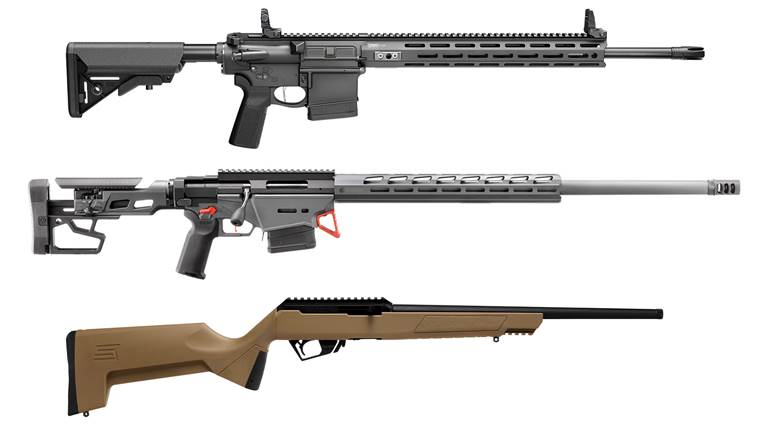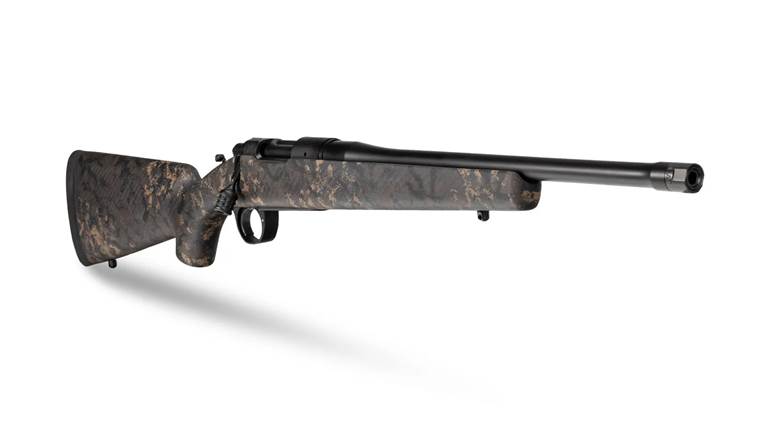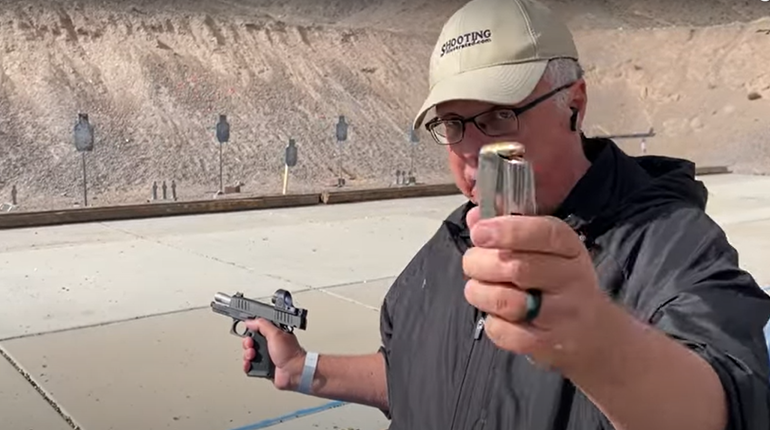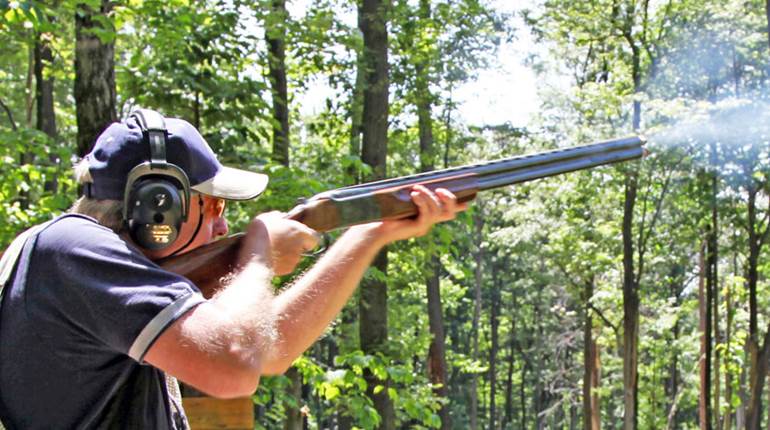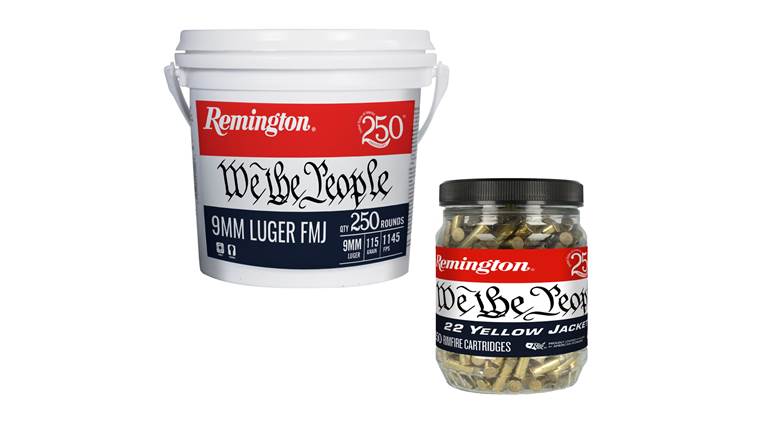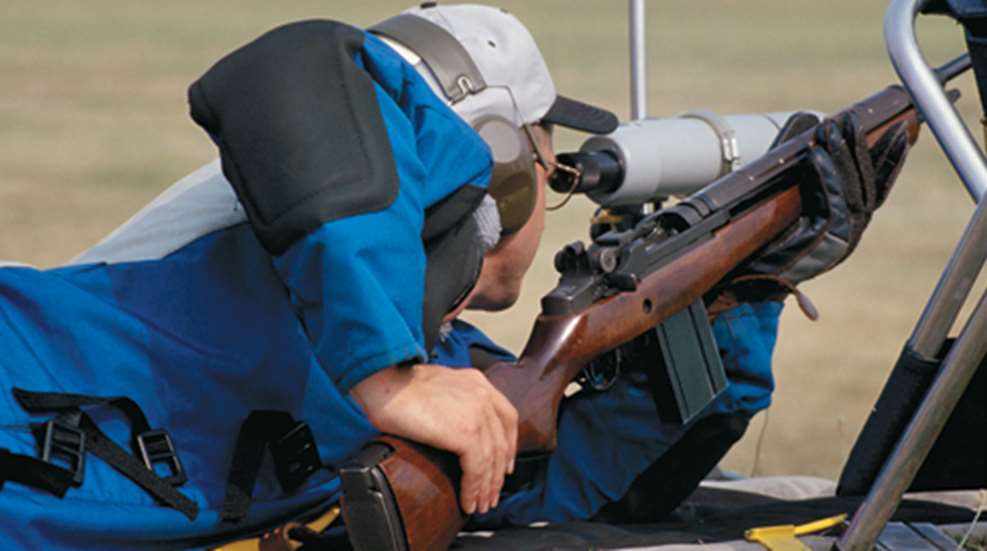
Originally published in the August 2002 issue of American Rifleman.
When commercial gunmaker Springfield Armory decided to begin making and selling a civilian version of the M14 rifle, it didn’t seem a plan long for this world. The M14 had been a qualified failure as a military arm and had been replaced years earlier. Why would civilians buy it?
In truth, even Springfield was not sure if the public would go for it and, if it did, for how long. But the company, then based in Texas, had acquired a large stock of military surplus M14 parts (from canceled government orders and guns returned from foreign militaries) and by making its own mil-spec or better receivers, it figured it could turn a fast buck. That was more than 25 years ago.
The Background
In 1962, the government’s Springfield Armory—the U.S. arsenal in Massachusetts that is linked by name only to the current Illinois-based company—was instructed to create some modified M14-based rifles for competition use. The guns were to have a number of modifications which basically worked toward the same end: The new rifles would have no full-automatic fire selector nor any means for accommodating one. Where practical, semi-auto M1 parts were installed to replace selective fire components. (See “The First M1As,” American Rifleman, August, 1990). Despite complying with BATF guidelines for a rifle readily suitable for sale to civilians, the gun ran afoul of DCM’s Maj. Gen. Nelson M. Lynde. Gen. Lynde felt the new rifles were not DCM-compliant as they could not be converted back to military issue configuration in the event of a national emergency.
However, in 1974 the then-newly formed Springfield Armory (now Springfield, Inc.) resurrected the design and petitioned for its approval for competition use. This time DCM relented with the stipulation that the company maintain the outward appearance of the M14 (except for the selector switch). Springfield Armory agreed. It dubbed the rifle the M1A and apprehensively brought it to market.
The Civilian Perspective
A closer examination of the situation revealed a product not nearly so lacking in appeal as a casual observer might have thought. The military had been trying to find a rifle that was all things to all people. The M14 wasn’t it; no gun is. It was considered too big and bulky for jungle combat and was practically impossible to control in full-auto mode. Well, American civilians weren’t engaging in jungle combat. For plinking or match shooting in the temperate plains and rolling hills of North America, the .308 Win.-cal. M1A proved just fine, thank you. And control during automatic fire wasn’t an issue for civilians since the M1A isn’t a selective-fire gun. So much for the “problems.”
It wasn’t just that the M14’s flaws weren’t of consequence to civilian shooters purchasing the M1A; the gun offered numerous virtues as well. It was a direct descendant of the M1 Garand. Some people will say to a young man, “If you’re half the man your father was … ,” meaning that you’re OK because your father was OK. Nowhere in firearms was that attitude better made manifest than in the public response to the M1A. Older shooters were often former soldiers who fondly remembered their legendary M1 Garands. Many younger shooters were the sons of those soldiers and had grown up hearing the reverence with which their fathers spoke of the big, semi-automatic battle rifle. When an opportunity presented itself to obtain one of the new “updated” Garand-type semi-automatics, such shooters couldn’t resist.
Still other shooting enthusiasts from the military had firsthand experience with the M14, having served when it was the issue arm. It may not have done everything the military brass had wanted it to, but many soldiers had liked the way it handled basic rifleman’s duties, and the gun was all right by them. It was an established performer, accurate and reliable. It was also quick to load, simple to operate and had excellent range. And—no small thing—it was chambered in the beloved .30 caliber—America’s caliber.
At the same time, it must be remembered, the service rifle then in use, the M16A1, had developed a bad reputation as unreliable, inaccurate at long range and underpowered. To many shooters, despite its short span as the standard military rifle, the M14/M1A was a known, proven quantity while the M16A1 was proving a mistake.
The Variations
With input from armorers for the Army and Marine Marksmanship units, a series of tuning procedures and mechanical features quickly developed for the M14/M1A. Springfield Armory, ever sensitive to the desires of its customers, incorporated the procedures and features into the production of a line of premium M1As designed specifically for service rifle matches. However, at the same time, it was careful not to alter the outward appearance of the gun and thereby kept it DCM-compliant.
In 1974, the company introduced the National Match M1A rifle. This rifle is built to do one thing—win service rifle matches. It comes equipped with a high-grade National Match walnut stock; 22" stainless steel, air-gauged, National Match, medium weight barrel with a 1:11" right-hand twist; National Match trigger group with 4 1⁄2-lb. two-stage trigger; National Match blade front sight; match-grade hooded aperture rear sight with one-half m.o.a. windage and elevation adjustments, a National Match gas cylinder, National Match recoil spring guide and a glass-bedded action.
The National Match was without peer among factory production DCM-legal .30-cal. service rifles—until the company unveiled the Super Match in 1975. Added to the already impressive National Match features were a choice of an oversized walnut, black or Marine camo McMillan fiberglass stock; 22" Douglas Premium, stainless steel, air-gauged, custom heavy match barrel with a 1:10" twist; and—since 1993—a rear-lugged receiver.
However, with the introduction of heavier .223 Rem.-cal. bullets for AR-15-style rifles in recent years, the M1A has lost its dominance in highpower matches. The heavier bullets—some weighing as much as 80 grs. and so long that cartridges have to be loaded singly into the gun—keep AR-15-style guns competitive with the M1A at the 600-yd. stage of highpower competition. Such was not always the case with earlier, lighter .223 bullets.
Despite AR-15-type/.223 Rem. advances, the M1A continues to thrive. It’s not finicky about ammunition, is available with wood furniture, hits hard, is rock solid and just looks the way some people believe a rifle should.
No, Springfield and the M1A are not done. With the development of its match rifles, the company found itself with a commercial version of a military rifle with all of the finest military rifle attributes—ruggedness, reliability, simplicity, power, magazine capacity—but this one was now also a long-range tackdriver. Mount a scope on a such a gun and you have a tactical or police marksman’s rifle. So, in 1985, that’s just what Springfield did.
In creating the M21 Tactical Rifle, Springfield took the Super Match and added the option of a stainless steel Kreiger barrel, detachable third generation scope mount (match-grade iron sights come standard) and walnut stock with adjustable comb to aid scope use. With the optional bipod mounted, it is a very serious piece of law enforcement/counter-terrorist equipment.
I had the opportunity to try an M21 at the superb Mid-South Institute of Self Defense Shooting in Mississippi in December of 2000. We were shooting Black Hills 168-gr. match ammunition at ranges of up to 180 yds. (Most police marksman shooting actually takes place at relatively short distances. The police marksman isn’t often under fire and is frequently able to get relatively close to the subject.) Despite my lack of familiarity with the gun and scope, I never missed. The stock’s raised comb comfortably kept my eye aligned with the ocular lens. It was downright simple to place the crosshairs squarely on the reactive targets and get a telling hit with each squeeze of the trigger. In any event, the semi-automatic action—which generated zero jams—would have made for some rather quick follow-up shots.
For those who simply have to have the “best of the best,” Springfield last year introduced the M25 White Feather Tactical Rifle. Named in honor of legendary Marine Corps sniper Carlos “White Feather” Hathcock, the M25 features a rear-lugged receiver, Kreiger 1:10" twist heavy match barrel (carbon or stainless), an integral Picatinny scope base, two-stage adjustable match trigger (1 1⁄2 to 4 3⁄4 lbs.), Harris bipod and low-profile custom muzzle brake/stabilizer. The fiberglass stock has an adjustable comb and a pistol grip with palm swell and is available in different colors. By special arrangement with the estate and family of Carlos Hathcock, the receiver of each M25 is marked with a facsimile of Hathcock’s signature and the White Feather logo.
A shortened (18" barrel), lightened version of the M1A is catalogued as the M1A Scout Squad Rifle. It was introduced in 1998 (see “Dope Bag,” April, 2000, p. 50). That arm is being proffered to law enforcement as a viable replacement for the police shotgun and an alternative to the AR-15-style carbine for those departments phasing out scatterguns. There is a strong case that may be made for the M1A Scout as the preferable long arm for law enforcement. The compact rifle offers better precision, range and firepower than a shotgun loaded with either slugs or buckshot and twice the muzzle energy of a .223-cal. gun.
Moreover, the M1A Scout, when fitted with a forward-mounted Aimpoint sight, just makes a terrific all-around gun for anyone who appreciates a compact, reliable .30-cal. semi-auto carbine—and who doesn’t?
Years of Sales and Fairy Tales
After 28 years, even Springfield’s vast supply of surplus parts has been exhausted and, with few exceptions, the gun’s components are newly manufactured parts. Demand was such that tooling up became profitable long ago. Boyds (walnut), Wenig (M21) and McMillan (fiberglass) now provide the high-grade stocks, though painted government-issue fiberglass units are used on the Standard and Scout models. The company continues to make its own precision investment cast receivers from 8620 alloy steel.
Springfield’s marketing philosophy has always been to focus on a handful of core designs of acknowledged excellence (such as the M1911 pistol) and tweak them to perform at their utmost and be applicable to a broad range of shooting needs. That simple strategy has proven enormously sound.
The histories of the company and its most popular longarm read like an interweaving of classic fairy tales. Springfield Armory, now in its third decade selling a product no one was certain of, is something of a Cinderella story. The M1A—a variant of the design the military didn’t want but the public can’t get enough of—seems the Ugly Duckling that now stands revealed as a beautiful swan. But, for Springfield Armory, it has also been the Golden Goose.












